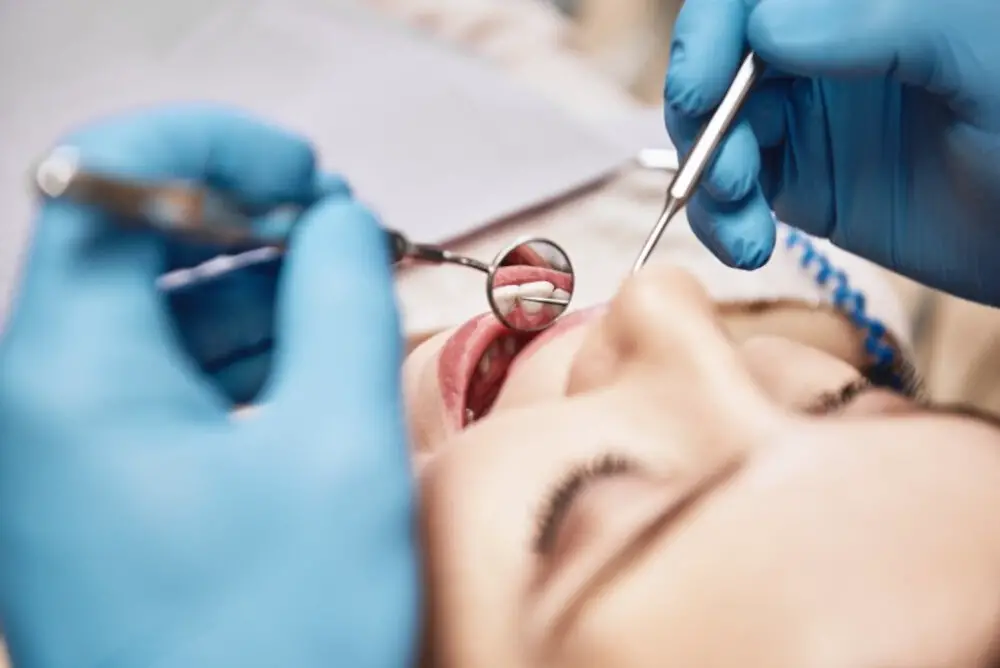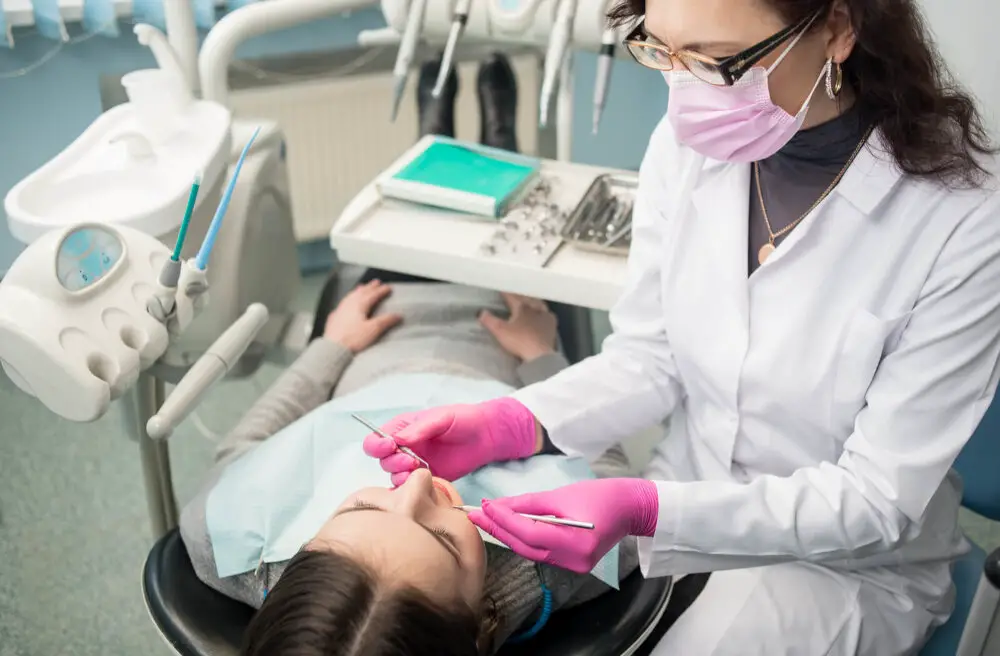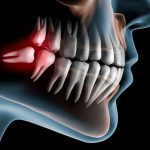Get Back Your Perfect Smile: Effective Solutions on How to Fix Shifting Teeth

A perfect smile is one of the most essential features of an individual’s appearance. It enhances one’s confidence, makes them appear more attractive, and leaves a lasting impression on others. However, shifting teeth can be a significant roadblock in achieving that perfect smile. Shifting teeth is a common issue that affects many people, and it can be caused due to various reasons such as genetics, dental trauma, and poor oral health habits. If left untreated, shifting teeth can lead to severe dental problems, including gum disease and tooth decay. But, with the right knowledge and solutions, you can fix your shifting teeth and get back your perfect smile. There are several effective solutions available to fix shifting teeth, ranging from traditional braces to modern clear aligners. Each solution has its own set of benefits and drawbacks, and the right solution for you will depend on your individual needs and preferences. In this article, we will explore the different solutions available to fix shifting teeth, their costs, and the pros and cons of each option. We will also discuss the importance of maintaining good oral hygiene to prevent shifting teeth, and provide tips on how to keep your teeth healthy and strong. So, whether you’re looking for a quick fix or a long-term solution, this article will provide you with all the information you need to get back your perfect smile.
Shifting teeth can occur due to several reasons including genetic factors, poor oral hygiene, injury, and age-related changes in the jawbone. When the teeth are not properly aligned, they can become crowded, twisted, or spaced apart. This can lead to several complications including difficulty in chewing, swollen gums, and tooth decay. Additionally, shifting teeth can also affect a person’s self-esteem and confidence. Therefore, it is important to address the underlying causes of shifting teeth and seek treatment to restore the natural alignment of the teeth and achieve a beautiful, healthy smile.
Fixing shifting teeth is of great importance not only for aesthetic reasons but also for overall oral health. Crooked teeth can lead to a variety of dental issues such as gum disease, tooth decay, and uneven wear on teeth. This can cause difficulty in maintaining proper oral hygiene, leading to additional dental problems. Moreover, misaligned teeth can affect one’s self-esteem, causing social anxiety and embarrassment in public settings. By fixing shifting teeth, individuals can improve their oral health, feel more confident in their appearance, and prevent future dental complications. With a variety of effective solutions available, it is easier than ever to restore a perfect smile and maintain optimal oral health.
Orthodontic Treatment

Orthodontic treatment is a specialized dental procedure aimed at correcting malocclusion, or the misalignment of teeth and jaws. This treatment involves the use of braces, aligners, and other orthodontic appliances to straighten teeth and improve their function and appearance. Orthodontic treatment is not just for aesthetic purposes, but it also helps prevent various oral health problems like tooth decay, gum disease, and jaw pain. Orthodontists are dental specialists who have undergone additional training and education to diagnose, prevent, and treat malocclusion effectively. The orthodontic treatment process typically starts with a consultation where the orthodontist will examine the patient’s teeth and take X-rays and impressions to create a treatment plan. The treatment plan may involve the use of braces, aligners, or other appliances, depending on the severity of the malocclusion. The treatment process may take several months or even years, depending on the complexity of the case. However, the end result is a beautiful, healthy smile that can last a lifetime. With advancements in orthodontic technology, patients can now choose from a variety of treatment options that are more comfortable, discreet, and efficient than ever before.
There are various types of orthodontic treatments available that can help fix shifting teeth and restore a perfect smile. Braces, one of the most common orthodontic treatments, involve attaching metal brackets to the teeth and connecting them with wires to gradually shift teeth into the desired position. Clear aligners, such as Invisalign, are a popular alternative to braces as they are virtually invisible and can be removed for eating and cleaning. Lingual braces are another option, where the brackets and wires are placed on the inside of the teeth, making them less noticeable. Additionally, ceramic braces are similar to traditional braces but use clear or tooth-colored brackets to blend in with the teeth. With various options available, it’s important to consult with an orthodontist to determine the best treatment for individual needs and preferences.
There are several types of solutions available to fix shifting teeth, each with their own unique approach. Orthodontic treatments such as braces use brackets and wires to gradually move teeth into the desired position over a period of time. Clear aligners such as Invisalign work similarly but are more discreet and can be removed for eating and cleaning. Retainers are often used after orthodontic treatment to keep teeth in their new position. For more severe cases, surgery may be necessary to realign the jaw and correct the bite. Regardless of the method chosen, it’s important to consult with a dental professional to determine the best course of action for each individual case.
Orthodontic treatment offers wonderful benefits for people who want to enhance their smile, bite and overall oral health. One of the main benefits of orthodontics is that it can correct misaligned teeth, crowding, and spacing issues, which can improve the function of your bite and reduce the risk of gum disease, cavities, and jaw problems. Additionally, orthodontic treatment can boost your confidence and self-esteem by giving you a beautiful, straight smile. However, there are some drawbacks to consider. Orthodontic treatment can be costly, and it requires a commitment to regular appointments and daily maintenance of braces or aligners. Additionally, some people may experience discomfort, pain, or soreness during treatment, and there may be some dietary restrictions. Despite these drawbacks, orthodontic treatment is a worthwhile investment in your oral health and overall well-being.
Dental Bonding

Dental bonding is a cosmetic dental procedure that involves the application of a tooth-colored resin material onto the tooth’s surface. This procedure aims to improve the appearance of the teeth by fixing chipped, cracked, or discolored teeth. Dental bonding is a relatively simple and affordable procedure that can be completed in a single office visit. The process involves the preparation of the tooth surface, application of a bonding agent, and the placement of the resin material. The dentist uses a special light to harden the resin material, which is then shaped and polished to give a natural-looking finish. Dental bonding is a popular cosmetic dental treatment due to its effectiveness in improving the appearance of teeth, its affordability, and the convenience of the procedure. Dental bonding is an excellent solution for people who want to fix their shifting teeth. The procedure can be used to fill in gaps, reshape teeth, and cover up stains. Dental bonding can also be used to fix minor orthodontic issues such as slightly crooked teeth. The treatment is minimally invasive, and the results can last for several years with proper care. Dental bonding is also a suitable alternative for patients who do not want to undergo more invasive dental procedures such as veneers or crowns. If you are looking for an effective and affordable solution to fix your shifting teeth, dental bonding may be the right option for you. Consult with your dentist to determine if dental bonding is a suitable option for your dental needs.
Dental bonding is a cosmetic dental procedure that involves the application of a tooth-colored resin material to the surface of damaged or discolored teeth. The resin is carefully molded and shaped to match the surrounding teeth, creating a natural-looking appearance. The procedure is typically used to repair chips, cracks, gaps, or stains in teeth. Dental bonding works by using a special adhesive to bond the resin material to the tooth’s surface. After the resin is applied, it is hardened using a special light, which creates a strong bond between the tooth and the resin material. This process provides a durable and effective solution that can restore the appearance of your teeth and give you back your perfect smile.
Dental bonding is an excellent option for fixing shifting teeth when the teeth are only slightly misaligned or have small gaps between them. This non-invasive procedure involves applying a tooth-colored resin material to the teeth, which is then bonded and hardened with a special light. Dental bonding can also be used to repair chipped or cracked teeth, as well as to improve the appearance of discolored teeth. It is a quick and affordable solution that can be completed in just one visit to the dentist’s office, and the results can last for several years with proper oral hygiene and maintenance. Dental bonding is a popular choice for those seeking a minimally-invasive solution to fix their shifting teeth without the need for braces or other more invasive procedures.
Dental bonding is a popular cosmetic dental procedure that can repair chipped, cracked, or discolored teeth. One of the main benefits of dental bonding is that the procedure is relatively quick and painless. It can typically be completed in a single visit to the dentist’s office, and it doesn’t require any anesthesia. Additionally, dental bonding is a more affordable option compared to other cosmetic dental procedures like veneers or crowns. However, dental bonding may not be as durable as other options and can chip or stain over time. It may also require more maintenance and touch-ups over the years. Additionally, bonding material may not be suitable for larger repairs or for teeth that need significant reshaping. Overall, dental bonding can be a good option for minor cosmetic dental issues, but it’s important to discuss all available options with your dentist to determine the best course of treatment for your individual needs.
Veneers

Veneers are a popular cosmetic dental solution for fixing shifting teeth. They are thin shells that are custom-made and placed over the front surface of teeth, significantly improving their appearance. Veneers are made of porcelain or composite resin and can be used to correct various dental issues such as chipped, discolored, or misaligned teeth. They are a minimally invasive solution that can be completed in just a few appointments, making them a convenient option for people who want to improve their smile quickly. Veneers are also durable and stain-resistant, providing long-lasting results that can give you a confident smile for years to come. The process of getting veneers involves a few steps. First, your dentist will assess your teeth and recommend the best type of veneers for your specific needs. They will then remove a small amount of enamel from the surface of your teeth to make room for the veneers. Next, they will take impressions of your teeth and send them to a dental lab where your custom-made veneers will be created. During your final appointment, your dentist will place the veneers on your teeth and make any necessary adjustments to ensure a comfortable fit. With proper care and maintenance, veneers can last up to 10-15 years, providing a beautiful and confident smile for years to come.
Veneers are thin, custom-made shells crafted from tooth-colored materials, such as porcelain or composite resin, designed to cover the front surface of teeth. They are an effective solution for fixing a range of cosmetic dental issues, including crooked, chipped, or discolored teeth. The process of getting veneers typically involves two visits to the dentist. During the first visit, the dentist will remove a small amount of enamel from the teeth to create room for the veneers. Then, an impression of the teeth is taken and sent to a dental lab, where the veneers are custom-made to fit each tooth precisely. During the second visit, the dentist will bond the veneers to the teeth with a special adhesive, creating a natural-looking, durable, and long-lasting solution for a perfect smile.
Veneers can be a great option for fixing shifting teeth when the misalignment is mild or moderate. These thin shells are custom-made to fit over the front surface of teeth and can cover up a variety of imperfections, including gaps, chips, and crookedness. Veneers are made from high-quality materials like porcelain, which is durable, stain-resistant, and can mimic the natural look of teeth. They can also be used to change the shape or size of teeth, creating a more symmetrical and balanced smile. However, veneers may not be the best option for severe cases of misaligned teeth, as they cannot correct bite issues or major misalignments. In such cases, orthodontic treatment or other dental procedures may be necessary.
Veneers are a popular cosmetic dental treatment used to improve the appearance of teeth that are discolored, chipped, or misaligned. One of the main advantages of veneers is that they can create a dramatic improvement in the appearance of a person’s smile in a relatively short amount of time. They are also quite durable and can last for many years with proper care. However, veneers can be quite expensive, and the process of getting them involves removing a layer of tooth enamel, which can be irreversible. Additionally, if the veneers are not properly fitted or if the underlying teeth are not healthy, they can cause sensitivity or other problems. Overall, while veneers can be an effective solution for certain cosmetic dental issues, it is important to carefully weigh the pros and cons before deciding whether this treatment is right for you.
Retainers

Retainers are a crucial element in maintaining the perfect smile you have always wanted. They are an orthodontic device used to hold teeth in their position after braces are removed, and they work by preventing your teeth from shifting or moving back to their original position. Retainers are typically custom made for each patient and can be either removable or fixed. Removable retainers are made of plastic or acrylic and are worn for a specific amount of time each day, while fixed retainers are bonded to the back of your teeth and can remain in place for several years. Retainers are essential for several reasons. First, they help to ensure that your teeth remain in their new position after braces have been removed. Without a retainer, your teeth are likely to shift back to their original position over time, undoing all of the hard work that has been done to straighten them. Second, retainers help to prevent other dental issues from occurring. Teeth that shift out of position can cause problems with your bite, leading to issues such as headaches, jaw pain, and even tooth decay. By wearing a retainer, you can avoid these problems and protect your oral health.
Retainers are dental orthodontic appliances that work by keeping teeth in their corrected position after orthodontic treatment. They are custom-made to fit the unique shape of a patient’s mouth and are typically made of clear plastic or wire material. Retainers work by applying gentle pressure to teeth to prevent them from shifting back to their previous position. Retainers can be removable or fixed, and the type of retainer chosen may depend on the severity of the patient’s orthodontic needs. Over time, the frequency of retainer use may decrease, but they should be worn regularly as prescribed by the orthodontist to ensure long-term success in maintaining a healthy and beautiful smile.
Retainers can be an effective option for fixing shifting teeth, especially for those who have already undergone orthodontic treatment. Retainers work by holding the teeth in their new position, preventing them from shifting back to their original position. They are custom-made to fit the patient’s teeth and can be made of either clear plastic or metal. Retainers are generally worn for a few months to a few years, depending on the severity of the shifting and the individual’s needs. Retainers can also be a good option for those who do not want to undergo another round of orthodontic treatment or for those who have minor shifting that needs to be corrected. However, it’s important to wear retainers as directed by the orthodontist to ensure the best results.
Retainers can be a great solution for those looking to maintain the results of orthodontic treatment. One of the biggest pros of retainers is that they help prevent teeth from shifting back to their original position. They are also relatively easy to wear and can be removed for eating and brushing your teeth. However, there are some cons to keep in mind. Retainers can be uncomfortable to wear, especially at first, and can cause speech impediments. Additionally, they require consistent use to be effective, and failure to wear them regularly can result in teeth shifting back to their original position. Finally, retainers can be expensive, with some types costing hundreds of dollars. Overall, while retainers have their pros and cons, they can be an effective way to maintain a perfect smile if used correctly.
Shifting teeth can pose issues ranging from aesthetic concerns to problems with chewing and speaking. Luckily, there are several effective solutions available to fix them. One option is braces, which use wires and brackets to gradually shift teeth into place. Another solution is clear aligners such as Invisalign, which are removable and almost invisible. Dental bonding and veneers are also options, which involve attaching a material to the teeth to change their appearance. In some cases, surgery may be necessary to address more severe shifting. Ultimately, the best solution will depend on the severity of the shifting and the individual’s unique needs and preferences. With the help of a dental professional, anyone can regain their perfect smile and enjoy the benefits of straight, healthy teeth.
Consulting with a dental professional is of utmost importance when it comes to getting personalized treatment recommendations for fixing shifting teeth. A qualified dental professional can provide an accurate diagnosis of the underlying cause of the shifting teeth and recommend the best course of action to remedy the situation. They can offer a wide range of treatment options, including braces, retainers, and clear aligners, depending on the severity of the condition. A dental professional can also provide valuable advice on how to maintain healthy teeth and gums, which is essential for preventing further shifting or damage to the teeth. By seeking professional help, individuals can restore their perfect smile and improve their oral health for years to come.
A perfect smile is a great asset that greatly boosts one’s confidence and self-esteem. If you have been struggling with shifting teeth, it’s not too late to take action towards getting back your perfect smile. There are various effective solutions available, ranging from dental braces to clear aligners, that can help restore your teeth to their proper alignment. Don’t let the fear of the unknown hold you back from achieving the smile you deserve. Take the first step towards your goal today and consult with a dental professional to explore your options. With determination and commitment, you can regain the confidence that comes with a perfect smile.
Conclusion

In conclusion, shifting teeth can have a significant impact on an individual’s self-confidence and overall dental health. However, there are several effective solutions available to fix shifting teeth, ranging from braces and clear aligners to retainers and dental crowns. Depending on the severity of the case, consulting with a dental professional is recommended to determine the best course of action. With the right treatment and proper care, individuals can regain their perfect smile and improve their oral health. Don’t let shifting teeth hold you back any longer – take action today and restore your confidence!







